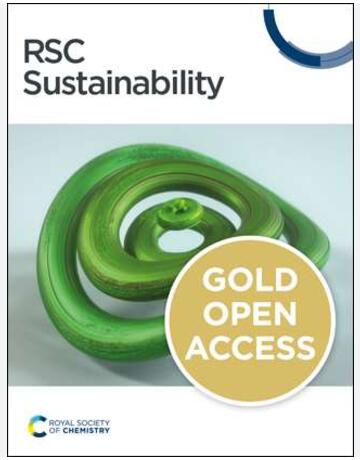CO2 Impact Analysis for Road Embankment Construction: A Comparative Environmental Assessment of Lignin and Lime Soil Stabilization Treatments
IF 3.3
3区 环境科学与生态学
Q2 ENVIRONMENTAL SCIENCES
引用次数: 3
Abstract
The last decade has witnessed increased attention toward products, services, and works with reduced environmental impacts. In the field of road construction, the use of alternative materials, wastes, or by-products obtained from industries is attracting considerable interest. The Life Cycle Assessment (LCA) is a powerful project-level tool that allows the assessment of the environmental impacts of a road infrastructure, from raw materials production to end of life phase. In this study, the environmental impacts (in terms of global warming potential-GWP) of an embankment construction project are investigated by a cradle-to-gate approach. The analysis focuses on all the processes involved in the construction of an embankment section, from the base to the preparation of the pavement formation level. The results are provided for two different road types and two different stabilization methods, including the use of lignin and lime. All processes that contribute towards global warming are investigated and described in detail. The most important finding of the LCA, in terms of GWP, is that the production of materials is the phase that contributes the significant share of the total environmental impact (more than 90%) for all scenarios. The lowest production-related emissions can be recorded for the scenarios involving lignin treatment for the stabilization of the embankment body. Furthermore, the percentage increase in GWP ranges between 51% and 39% for transportation activities and 10–11% for construction activities, comparing the scenarios including lime stabilization with the scenarios involving lignin treatment.道路路堤施工CO2影响分析:木质素和石灰土稳定处理的环境比较评价
在过去的十年里,人们越来越关注减少环境影响的产品、服务和工作。在道路建设领域,使用从工业中获得的替代材料、废物或副产品引起了人们的极大兴趣。生命周期评估(LCA)是一个强大的项目级工具,可以评估道路基础设施的环境影响,从原材料生产到生命周期结束阶段。在本研究中,通过从摇篮到大门的方法调查了路堤建设项目的环境影响(根据全球变暖潜能值)。分析的重点是路堤路段施工中涉及的所有过程,从基层到路面平整度的准备。提供了两种不同道路类型和两种不同稳定方法的结果,包括使用木质素和石灰。对导致全球变暖的所有过程都进行了详细的调查和描述。就全球变暖潜能值而言,生命周期评价最重要的发现是,在所有情景中,材料的生产在总环境影响中占很大份额(超过90%)。在涉及木质素处理以稳定堤身的情况下,可以记录最低的生产相关排放。此外,通过比较包括石灰稳定在内的情景和涉及木质素处理的情景,运输活动的全球升温潜能值的百分比增幅在51%至39%之间,建筑活动的全球变暖潜能值增幅在10-11%之间。
本文章由计算机程序翻译,如有差异,请以英文原文为准。
求助全文
约1分钟内获得全文
求助全文
来源期刊

Sustainability
ENVIRONMENTAL SCIENCES-ENVIRONMENTAL SCIENCES
CiteScore
6.80
自引率
20.50%
发文量
14120
审稿时长
17.72 days
期刊介绍:
Sustainability (ISSN 2071-1050) is an international and cross-disciplinary scholarly, open access journal of environmental, cultural, economic and social sustainability of human beings, which provides an advanced forum for studies related to sustainability and sustainable development. It publishes reviews, regular research papers, communications and short notes, and there is no restriction on the length of the papers. Our aim is to encourage scientists to publish their experimental and theoretical research relating to natural sciences, social sciences and humanities in as much detail as possible in order to promote scientific predictions and impact assessments of global change and development. Full experimental and methodical details must be provided so that the results can be reproduced.
 求助内容:
求助内容: 应助结果提醒方式:
应助结果提醒方式:


